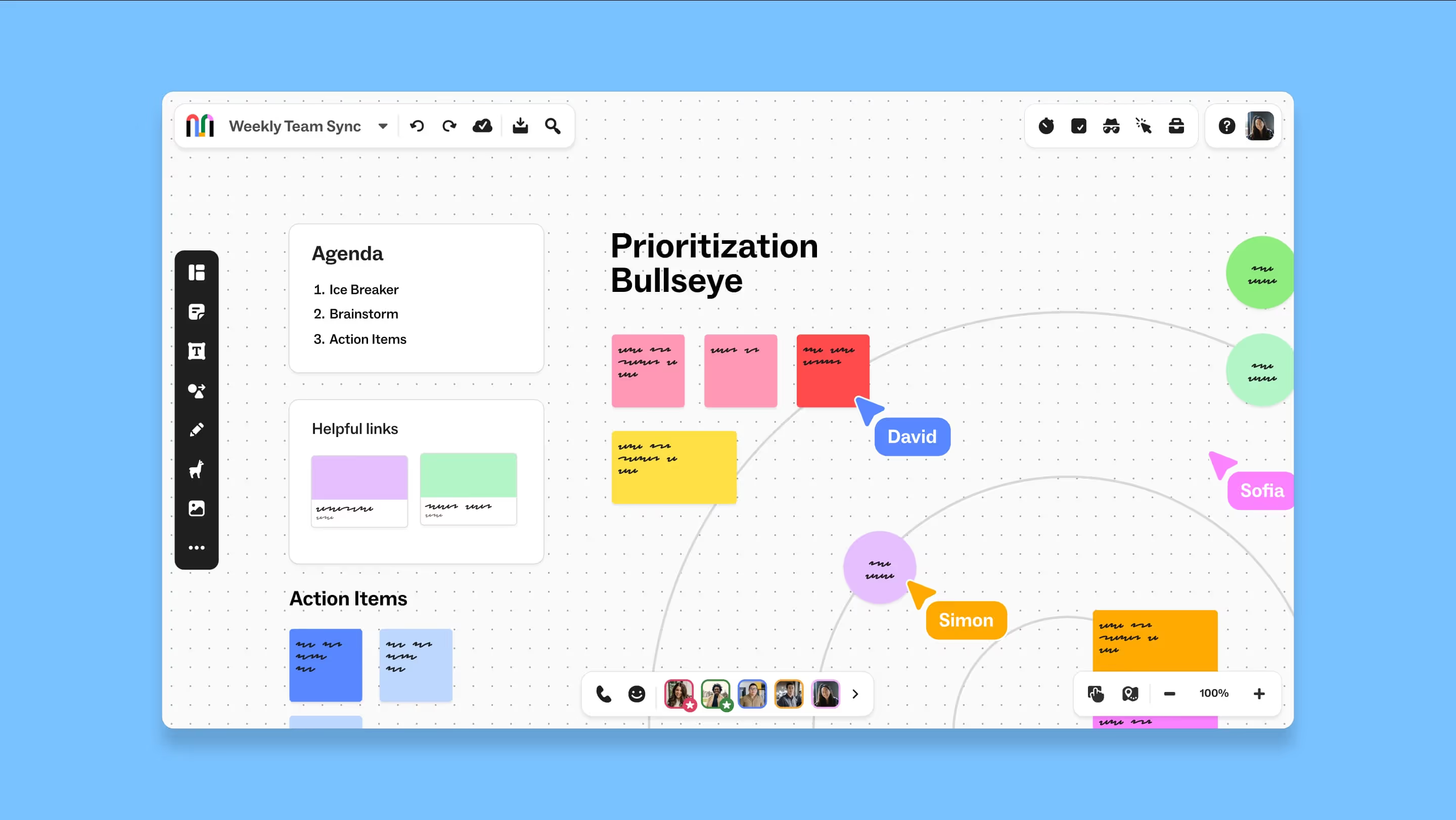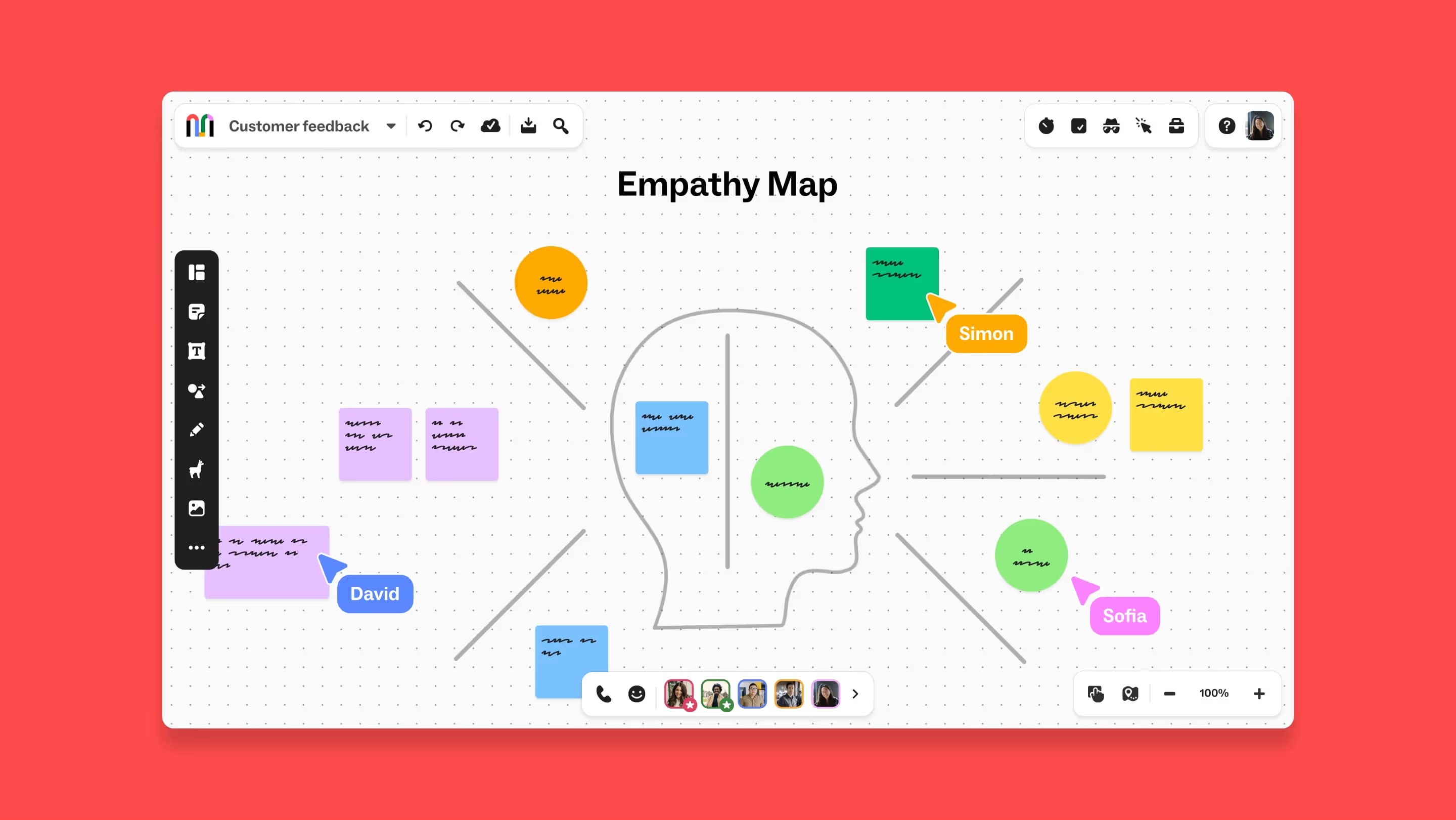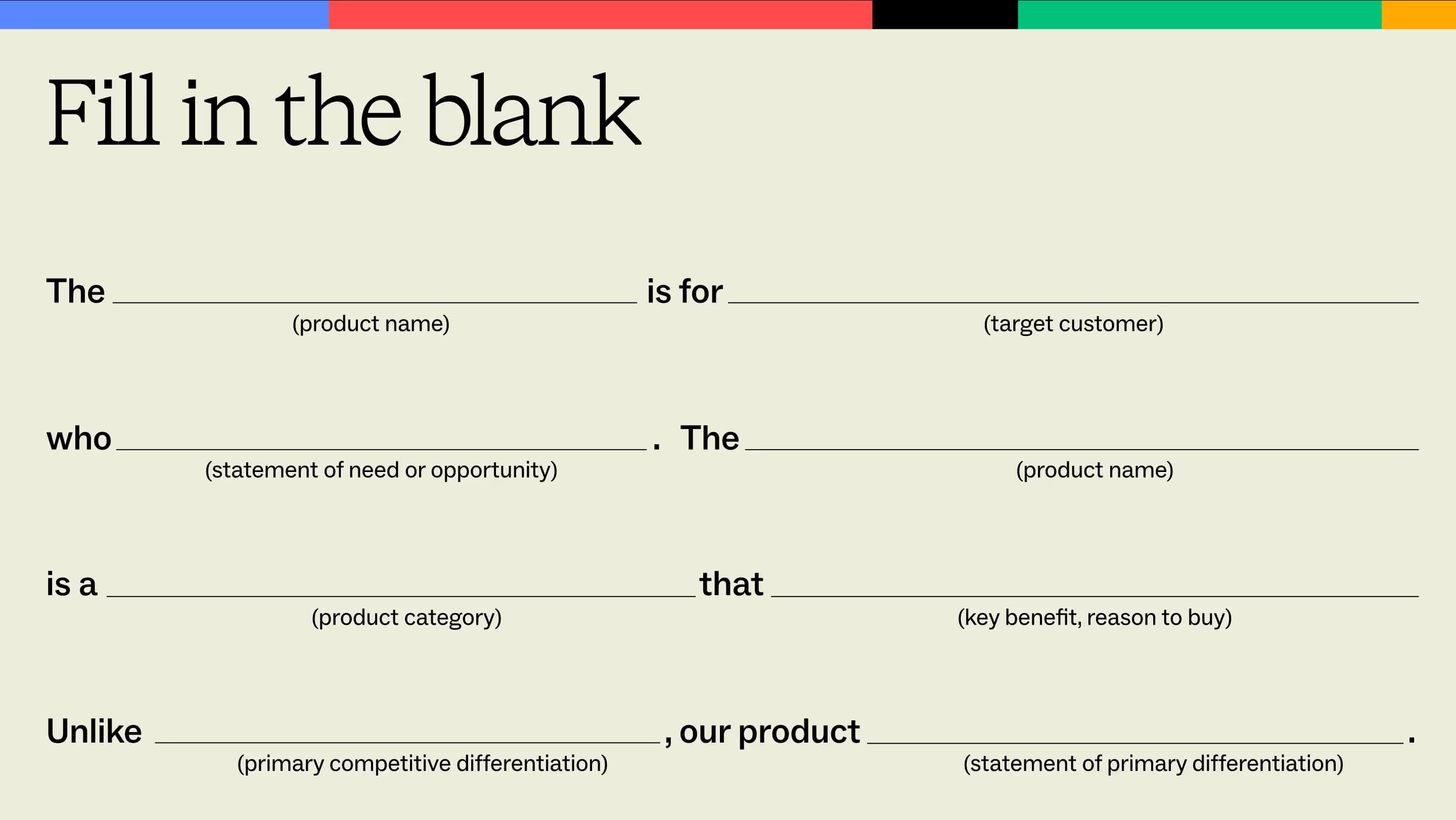The goal of a product vision is to provide a clear and compelling picture of the future state of the product — including its purpose, value proposition, and long-term goals — that guides the team's efforts and decision-making toward a shared desired outcome.
In this post, we'll look at how to create a product vision that clearly and concisely helps your team get and stay aligned. Then, we'll walk through some examples of effective product vision statements and a product vision board template you can use to create your own.
What is a product vision statement?
Product vision statements define why a product exists, what problems it solves, who it serves, and how it's different from the competition. Product visions serve as frameworks for product teams to understand what they are working on and why it matters.
Consider your product vision your north star, guiding your product team as they ideate, prioritize, design, develop, test, and iterate. It's the overarching, future-facing mission that everyone — the product owner, product managers, designers, engineers, and beyond — is on together.
Product vision statement format
This is a classic, fill-in-the-blank format you can use to guide your thinking:
[Product] is for [target customer] who [statement or need of opportunity]. The [product name] is a [product category] that [key benefit, reason to buy]. Unlike [primary competitive alternative], our product [statement of primary differentiation].
How your product vision statement fits into the larger product strategy
Your vision also serves as the cornerstone of your product strategy. But while your product strategy should be resilient, adapting to the market and your customers' needs, your product vision will remain relatively static to keep your team oriented in the right direction.
What makes a great product vision?
Purposeful
A purposeful and aligned product vision statement helps to make sure that the product team is working towards a meaningful and valuable goal, that the product is well-integrated with the company's overall strategy, and that the product is positioned for long-term success.
Achievable
Making your product vision statement achievable is critical for making sure that the team stays motivated and focused, building credibility with stakeholders, and ensuring the long-term sustainability of the product.
While it is important to have ambition, it's equally important that your vision is grounded in reality and your product can get to market quickly and completely.
Aspirational
Your product vision should orient your team to the future and paint a picture of what your product aims to achieve. It should articulate the product's mission and how it will change the lives of its users in a way that energizes your team to pursue bold ideas.
Customer-focused
A product vision statement should demonstrate that the product team is thinking about the customer first. This means that they make decisions based on what the customer needs and wants. Product visions grounded in comprehensive customer research tend to lead to products that succeed once they hit the market.
Pro-tip: Try mapping the customer journey to understand the needs, motivations, emotions, and actions a user may experience while learning about and interacting with your product.
Concise
Writing a concise product vision makes it easier to remember and communicate, helps to focus the product team's efforts, and prevents any confusion or misinterpretation.
Well-documented
Creating your vision is step one, but documenting it and weaving it into the fabric of your product team is critical for making it a reality. Write it down, share it out, and make sure everyone working on the product knows it like the back of their hand.
It can be tough to finalize a perfect product vision, especially when you're starting from square one. As the product owner, you also own the product vision, but that doesn't mean you should define it on your own. The best visions are created in collaboration with product stakeholders and pressure-tested by the leadership team.
Before you can craft your vision, make sure you have the right data and resources on hand. Typically, that means gathering your company vision statement, nailing down your product purpose, and completing an empathy map to deeply understand your customers. Let's take a closer look at how these components — in particular, your product purpose and empathy map — feed into an effective product vision.
{{figma-integration="/cta-components"}}
How to create a meaningful product vision
Define the product's purpose
Creating your product vision starts with understanding the purpose of your product. This ultimately boils down to three questions.
- Why does your product exist?
- How will you achieve your ‘why’?
- What's your product?
It sounds easy enough, but this is really an exercise in specificity. You could probably list out dozens of reasons why your product exists, and you could describe it in myriad different ways. But for this exercise, make sure you collaborate with product stakeholders to boil it down to its core, to what really matters.
Below is a simple framework that can help your team. We recommend spending about 15 minutes workshopping your product's purpose with your team. It can be tempting to spend longer on this, but working quickly and efficiently at this stage really lays the groundwork for getting to market fast.

Outline the product's unique value proposition
Determine what sets the product apart from others in the market, and how it will create a competitive advantage.
Identify the target customers
Determine who the product is designed for and what their needs and pain points are. This can help to inform how the product will provide value to its users.
Analyze the competition
Understand what other products are currently available in the market, and identify their strengths and weaknesses. This can help to identify gaps in the market that the product can fill, or opportunities to differentiate the product from its competitors.
Determine the product's key features and benefits
Identify the specific features and benefits of the product that'll provide value to its users, and how these features and benefits compare to those of other products in the market. This can help to articulate the product's unique value proposition.
Consider the product's design and user experience
Consider how the product's design and user experience will set it apart from its competitors, and how it'll create a positive and memorable experience for its users.
Align the product vision to broader company goals
Confirming that the product vision aligns with the company's broader vision and strategy is critical for protecting the long-term success and sustainability of the product.
Consider the company's strategic goals
Review the company's strategic plan and goals, and identify how the product vision can contribute to these goals. This can help to ensure that the product supports the company's long-term growth and success.
Align on product strategy with cross-functional teams
Engage with other teams in the company, such as marketing, sales, and engineering, to make sure that the product vision is aligned with their needs and priorities. This can help integrate the product into the company's broader operations and goals and eliminate potential go-to-market roadblocks.
Empathize with your users
Next, complete an empathy map to develop a deep, shared understanding of your users. If it's been a while since you've done this, do it again! Before you can write a successful product vision, everyone should have an intimate knowledge of their needs, their pain points, and their motivations.
First things first, you need to have a clear view of your target persona. Who are you creating this product for? From there, your team can spend 30 minutes completing an empathy map that organizes and refines your collective knowledge about your persona. This empathy map template can guide you through the process. The completed empathy map will serve as a valuable tool when you actually sit down to create your product vision.

With these resources in hand, your team can define your product vision. You can use this simple, concise format to tell a compelling product story that resonates with your audience.
Review and update the product vision statement as needed
Regularly revisit the product vision and make adjustments as needed based on new insights, feedback, and changing market conditions. Here are some specific actions that can help to ensure that the product vision is iterated and refined over time:
- Solicit feedback from stakeholders.
- Stay up-to-date on changes in the market.
- Revisit the product roadmap.
- Be willing to pivot the product vision if necessary.
Refining the product vision over time can help ensure that the product is well-aligned with changing market conditions, evolving customer needs, and emerging technologies.
How do product owners contribute to the vision?
Product owners play a crucial role in creating and steering the product vision, which serves as a roadmap for the development team and aligns with the overall business goals. As the primary liaison between stakeholders and development teams, product owners make sure that every feature and update isn't only feasible but also beneficial for the end user and the company. Their deep understanding of market needs, user feedback, and business objectives allows them to craft a vision that's both inspiring and practical.
Here are five specific ways product owners can contribute to a product vision:
- Gathering and integrating stakeholder input: Regularly collect and synthesize feedback from all stakeholders, including customers, business executives, and the development team, to make sure the product vision aligns with user needs and business goals.
- Defining clear objectives: Establish and communicate clear, actionable objectives for the product that guide development efforts and decision-making processes.
- Prioritizing features: Decide which features and functionalities are most crucial to achieving the vision and prioritize them in the product roadmap.
- Communicating vision and updates: Keep all parties informed about the product vision and any updates or changes to ensure alignment and buy-in across the organization.
- Monitoring market and technology trends: Stay updated on the latest trends in the market and technological advancements to continually refine and adapt the product vision to stay competitive and relevant.
Product vision template and example
There's no one-size-fits-all format for a product vision, but there are tried-and-true templates you can use as a jumping-off point. This is a classic, fill-in-the-blank format you can use to guide your thinking.

This template, which is adapted from Crossing the Chasm by Geoffrey Moore, was originally intended for creating product positioning statements. While positioning refers to the space your product occupies in the market, your product vision should be more aspirational and ambitious.
🚀 Pro Tip: Get this template, along with the other building blocks of a resilient product strategy, in the resilient product roadmap template in Mural.
Presentation matters
Product vision statements prepare your team to express the intentions behind your product, and the better you can present your product to stakeholders, the more likely you’ll be able to execute on your development roadmap without running into blockers along the way.
Nailing down your product vision statement can help with these important presentations, as it can greatly improve your team’s ability to communicate your product’s value.
Now, let's take a look at some real-world examples of product visions that tell a meaningful story.
Product vision statement examples
Need a little inspiration before you get started? These real product visions from notable companies can help. They don't strictly follow Geoffrey Moore's format, but they're all aspirational, and they all address what their product is, who it's for, and how it's different.
Tesco
The British grocery chain Tesco has a team focused entirely on loss prevention science. This is how they describe their vision: "Our product vision is to provide a single source of decision making for loss prevention within Tesco, across any channel or market. We operate at the point of transaction, so Tesco chooses which transactions to allow, block or intervene in, to grow sales and manage losses."
GitLab
GitLab is an open-source DevOps platform that allows teams to deliver software faster and more efficiently. This is their vision for GitLab Runner: "Our vision for GitLab Runner is to offer DevOps teams a build agent that works seamlessly on tomorrow's market-leading computing platforms and the tools to eliminate CI build fleet operational complexity at enterprise scale."
Fender
The iconic musical instrument company Fender describes their product vision for their electric guitars and bass guitars like this: "Our product vision is to accompany each player at every stage with products and brand experiences that fuel the pursuit of musical expression for players at every level."
How to pick product vision software
When creating a product vision, one of the key steps is selecting the right software tools for the job. The right software can make a big difference in how well your vision is not only understood but also implemented, making sure everyone is aligned and moving toward the same goals.
Choosing the right software:
- Alignment-focused: Look for software that brings teams and stakeholders together via visual collaboration to promote and achieve alignment. Tools that allow real-time updates, comments, and sharing are essential. When everyone contributes to the vision and stays updated on changes, projects stay on track and products get to market on time.
- Powered by AI: Leading-edge product vision software makes use of the artificial intelligence technology that is transforming the professional world. Mural AI, for instance, can help you generate new ideas in an ideation session, classify and understand participants’ thoughts, and summarize feedback as you refine your vision statement.
- User-friendly interface: Select software that's intuitive and easy to use. A steep learning curve can hinder adoption and slow down the process. The quicker your team can get up to speed, the faster they can start contributing to the product vision.
- Scalability: Consider the scalability of the software. As your project grows, your software should be able to handle increased demands without performance issues. This includes managing larger amounts of data, more complex project timelines, and a greater number of users.
- Security features: Since the product vision often includes sensitive information about future plans and company strategies, security can't be overlooked. Make sure the software provides robust security measures to protect your data from unauthorized access and breaches.
By carefully selecting software that meets these criteria, you can ensure that your product vision isn't only well-crafted but also effectively communicated and executed. This foundational step is crucial in turning your vision into a successful product.
The bottom line
Product teams are often saddled with a lot of different canvases and frameworks, leaving them asking how each one fits into the larger framework of a strategic product roadmap. To solve this challenge, we've developed a resource to simplify the product visioning and roadmapping process.
Now, it’s your turn. Rally stakeholders from product management, design, and engineering for a series of collaborative planning sessions that cover each of the exercises outlined in the template. Try the template below to get started.







.png)




